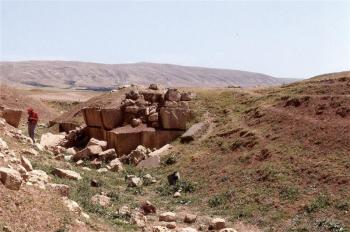American Journal of Archaeology | The Journal of the Archaeological Institute of America
You are here
Space, Sound, and Light: Toward a Sensory Experience of Ancient Monumental Architecture
April 2013 (117.2)
Space, Sound, and Light: Toward a Sensory Experience of Ancient Monumental Architecture
Scale and symmetry in monumental architecture are embraced by archaeologists as the primary vocabulary in past statements of power. In ancient Mesopotamia in particular, the excessive size of public buildings implied the control of both space and people. The predictable, often symmetrical plans regulated and reflected control over users’ behavior. However, interpretations based on plans alone remain simplistic; analyses from ground level can better encompass the lived experience of a building’s occupants or users. Close ground-level phenomenological analysis of movement through the Neo-Assyrian capital city of Khorsabad (constructed and inhabited 717–706 B.C.E.), particularly its citadel, indicates that manipulation of fields of view, interplay of light and shadow, and variations in sound were equally important means of conveying ideological messages.
Space, Sound, and Light: Toward a Sensory Experience of Ancient Monumental Architecture
By Augusta McMahon
American Journal of Archaeology Vol. 117, No. 2 (April 2013), pp. 163–179
DOI: 10.3764/aja.117.2.0163
© 2013 Archaeological Institute of America


